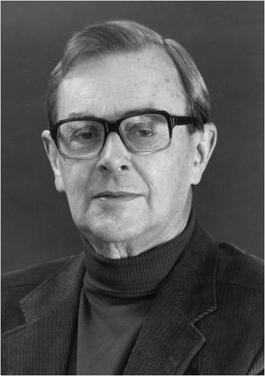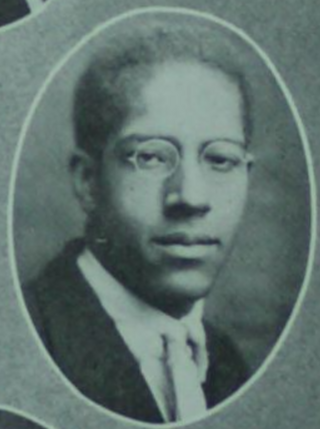Related Research Articles

Brian David Josephson is a Welsh physicist and was professor emeritus of physics at the University of Cambridge. Best known for his pioneering work on superconductivity and quantum tunnelling, he shared the 1973 Nobel Prize in Physics with Leo Esaki and Ivar Giaever for his discovery of the Josephson effect, made in 1962 when he was a 22 year-old PhD student at Cambridge.

Sir Alfred Brian Pippard, FRS, was a British physicist. He was Cavendish Professor of Physics from 1971 until 1982 and an Honorary Fellow of Clare Hall, Cambridge, of which he was the first President.
Harry Kroger was an American physicist and electrical engineer. He used to be a Bartle professor of electrical engineering at Binghamton University, a part of the State University of New York (SUNY) system. He had been a member of the Institute of Electrical and Electronics Engineers (IEEE) since 1964 and became a Life Fellow of the IEEE in 2001. He initially retired to Florida, then moved back to Austin, Texas.
Bascom Sine Deaver Jr. is a retired American physicist known for his research into superconductor applications, and a professor and assistant chairman for undergraduate studies of the physics department at the University of Virginia.

Julius Henry "Jute" Taylor was a professor emeritus at Morgan State University, where he was also the first chairperson of the department of physics, which he helped to establish at the university. He was the second African-American person to receive a PhD from the University of Pennsylvania in Philadelphia, Pennsylvania, and the first African-American person to receive a PhD in physics at the university. Taylor's research focused on x-ray diffusion, and electrical and optical properties of semi-conductors.
Steven Mark Girvin is an American physicist who is Sterling Professor and former Eugene Higgins Professor of Physics at Yale University. He is noted for his theoretical work on quantum many body systems such as the fractional quantum Hall effect, and as co-developer of circuit quantum electrodynamics, the application of the ideas of quantum optics to superconducting microwave circuits. Circuit QED is now the leading architecture for construction of quantum computers based on superconducting qubits.
Arthur Foster Hebard is Distinguished Professor of Physics at University of Florida in Gainesville, Florida. He is particularly noted for leading the discovery of superconductivity in Buckminsterfullerene in 1991.
James Arthur Krumhansl was an American physicist who specialized in condensed matter physics and materials science. He spent much of his career at Cornell University. He also served as president of the American Physical Society and assistant director for mathematics, physical sciences, and engineering for the National Science Foundation. In 1987 he testified before Congress that the Superconducting Super Collider would be too costly.

Njema Frazier is a nuclear physicist at the Department of Energy's National Nuclear Security Administration (NNSA) in Washington, D.C.

Warren Elliot Henry was an American physicist, a Fellow of the American Physical Society, and the American Association for the Advancement of Science for his work in the fields of magnetism and superconductivity. He made significant contributions to the advancement of science and technology and education, training and mentoring several generations of physicists.
Zhi-Xun Shen is a Chinese-American experimental and solid state physicist who is a professor at Stanford University. He is particularly noted for his ARPES studies on high-temperature superconductors.
Jules P. Carbotte was a Canadian physicist, professor at McMaster University and a Fellow of the Royal Society of Canada. His research interests spanned many areas of theoretical condensed matter physics.

The Princeton University Department of Physics is an academic department dedicated to research and teaching at Princeton University. The associated faculty members, researchers, and students have been recognized for their research contributions, having been awarded 19 Nobel Prizes, four National Medals of Science, and two Wolf Prizes in Physics. Notable professors, researchers, and graduate students affiliated with the department include Richard Phillips Feynman, Joseph H. Taylor, Jim Peebles, Eugene P. Wigner, and John von Neumann. In addition, the department offers degree programs for bachelor's students (A.B.) and doctoral students (Ph.D.).
Calvin Rudolph Howell is an American physicist and professor at Duke University in Durham, North Carolina.
Demetrius Dante Venable is an American physicist and professor emeritus at Howard University in Washington, D.C. Over his career, he has specialized in optical physics, and is known for establishing and developing physics programs at multiple historically Black universities.

Titus Pankey was an American physicist and professor whose research specialties were magnetic susceptibility and cosmology, especially supernovas. He was the first recipient of a PhD in physics from Howard University, and was one of the first 10 black recipients of a PhD in physics in the United States. He has been cited as the first to suggest that type 1a supernovae are powered by nickel-56 decay.
John McNeile Hunter was an American physicist and chemist, and the third African American person to receive a PhD in physics in the United States. He spent the entirety of his career as a professor of physics at the Virginia State University, where he also established and served as the first chair of the college's physics department. Virginia State College's physics program was one of the first at a historically Black college in the country. Hunter's research was focused on thermionics.

Halson Vashon Eagleson Jr. was an American physicist and professor. Eagleson's research focused on acoustics and the behavior of sound.
Hubert Mack Thaxton was an American nuclear physicist, mathematician, engineer, and the fourth African American person to earn a PhD in physics in the United States. Thaxton's research focused on proton scattering, which at the time was a largely unexplored area of study.
Steven Leslie Richardson is an American physicist and professor of electrical engineering. He is currently a professor emeritus at Howard University, a co-principal investigator in the National Science Foundation Science and Technology Center for Integrated Quantum Materials, and a Faculty Associate in Applied Physics in the John A. Paulson School of Engineering and Applied Sciences at Harvard University.
References
- 1 2 Rankins, Claudia M.; Roberson, Stephen (February 13, 2021). "The First Five: The Story of the Connection of the First Five Physics PhD Recipients to HBCUs". National Society of Black Physicists. Retrieved 21 June 2022.
- 1 2 3 The HistoryMakers (2012). "ScienceMakers: An Innovative African American Media and Educational Initiative" (PDF). HistoryMakers.org. Retrieved 21 June 2022.
- 1 2 "Arthur Nathaniel "Pete" Thorpe | U.S. Geological Survey". www.usgs.gov. Retrieved 2022-06-21.
- 1 2 3 "ARTHUR N. THORPE Ph.D. Obituary (2015) The Washington Post". Legacy.com. Retrieved 2022-06-21.
- ↑ University, Howard (1964-06-05). "1964 - Howard University Commencement Program". Howard University Commencement Programs.
- ↑ "The Story of the Cooperative Education Physics Program at Howard University | CASL" . Retrieved 2022-06-21.
- ↑ Thorpe, Arthur; Morris, Vernon (1997). "Five-Year Report April 1992-December 1996" (PDF). NTRS - NASA Technical Reports Server. Retrieved 22 June 2022.
- ↑ "Arthur N. Thorpe - Physicist of the African Diaspora". www.math.buffalo.edu. Retrieved 2022-06-22.
- ↑ "Arthur Nathaniel Thorpe - Publications". academictree.org. Retrieved 2022-06-22.